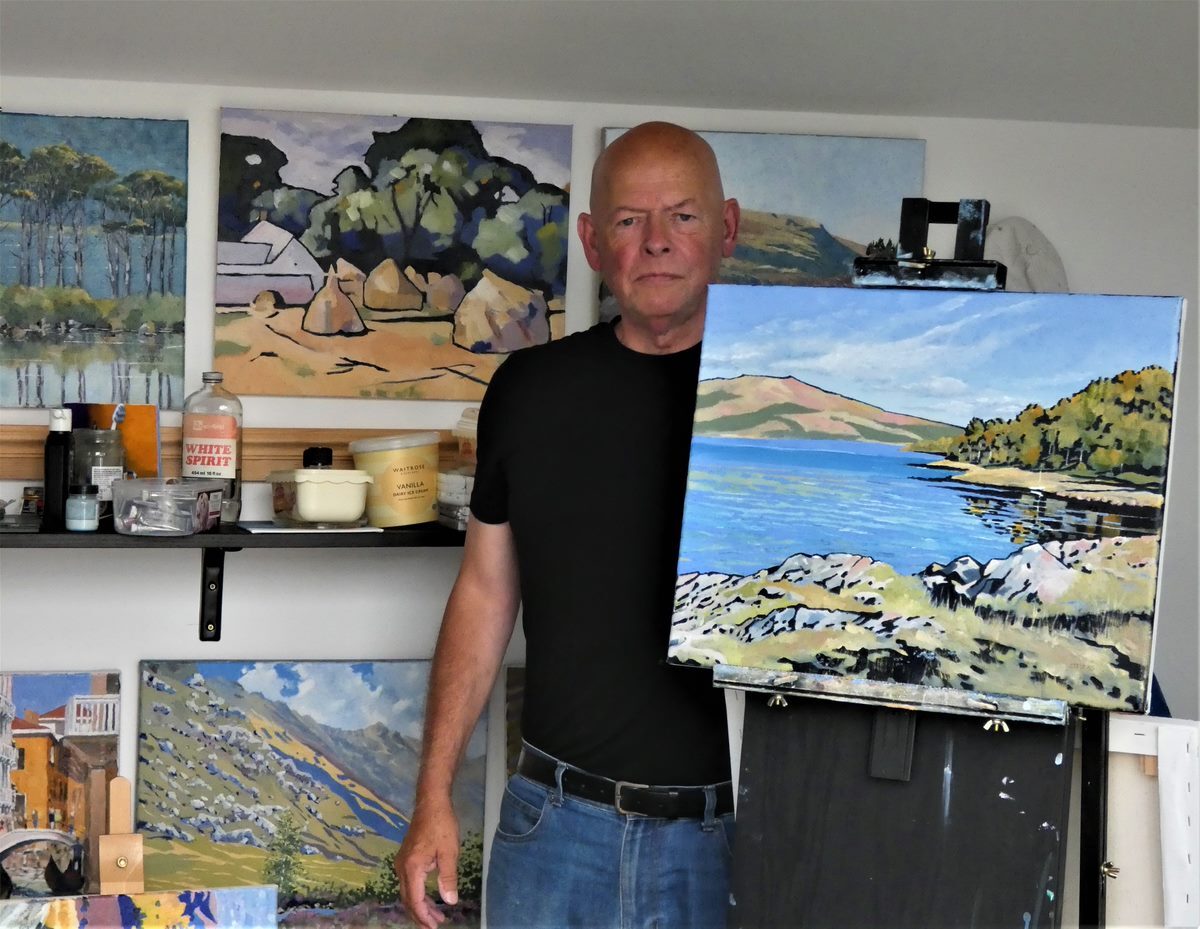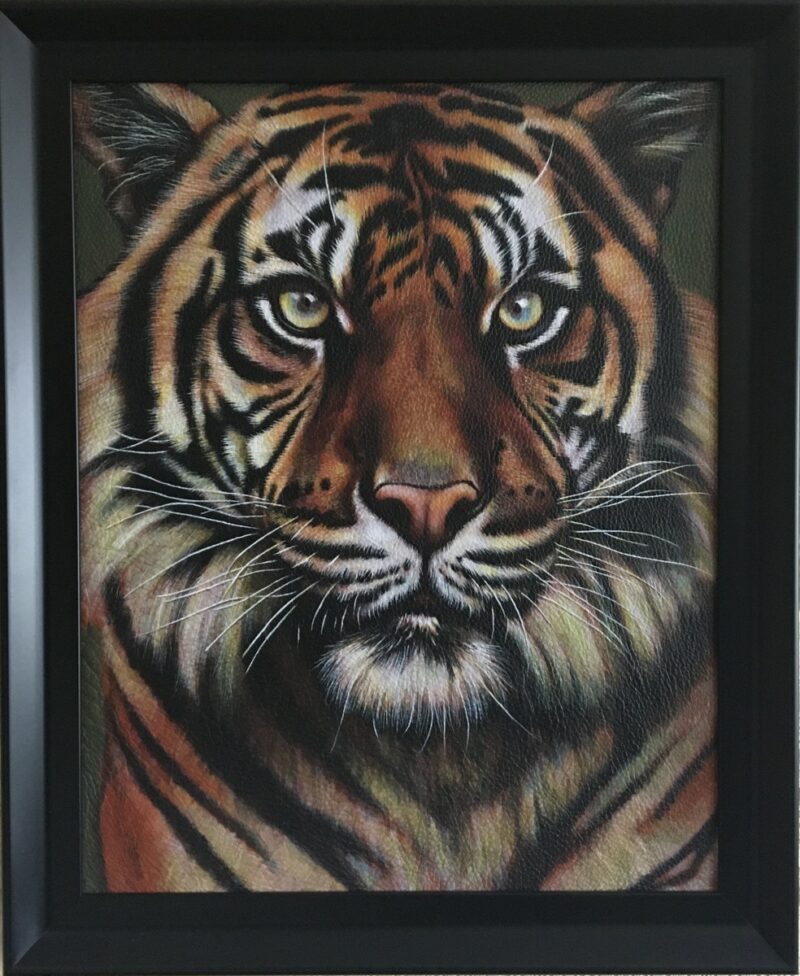Artists come in a range of styles with each one distinctively their own. Some artists welcome a particular style and stick with it their entire career. However, there are some artists that prefer to allow their work to evolve through time embracing various styles throughout their lifetime. Andrew Stevens is an artist that enjoys all types of art and is never pinned down by one style. His pieces are primarily scenery and still life based, but many of his works utilize animal subjects. He is a truly gifted artist that portrays a level of beauty in his paintings that captures the very essence of the subject.
Andrew resides in Scotland where he enjoys painting the illustrious scenery surrounding his home. Inspiration for his various pieces comes from a range of primarily Scottish artists. However, like his artwork, Andrew takes inspiration for a variety of artists and art genres. This English artist showcases his passion for art in every piece he produces. His use of light and colour is masterful in both still life and landscape paintings. Although Mr. Stevens is a serious artist, a bit of whimsy also comes through his pieces with an almost abstract portrayal of certain scenes, but what does Andrew Stevens have to say about his work?
Where did your initial inspiration for art come from?
I’ve always sketched and painted and I remember as a small schoolboy going to the Tate in London on a school trip and being overawed by the paintings. Nearly sixty years later I can still remember one or two that left a lasting impression.
Are you a self taught or classically trained artist?
I’m self-taught. I don’t know whether that’s a good or bad thing. Obviously, one learns from one’s mistakes but gradually the importance of composition, colour combinations, warm and cool values or tones and brushwork develop. Nearly all artists are inspired by the work of other artists and I think we can learn a lot by occasionally copying another artist’s work because it makes us see and paint differently, which is a way of exploring and developing our own artistic skills. Van Gogh did this; for example, by copying some of the Japanese artist Hiroshige’s block prints.
Do you have a favourite or a few favourite pieces you have painted?
I do have some of my own paintings that I’m very fond of and these are influenced by artists I admire – S. J. Peploe, F. C. B. Cadell and Edward Seago in particular. When I go to a gallery I tend to look closely at a painting and try to visualize how the artist worked – the brushes they used, their use of brushwork and of colours and their choice of composition, all tell a story and give me an understanding of how the painting was created. In some of Cadell’s paintings I get a sense of the urgency and speed as he painted, probably wanting to catch the light at a particular moment.
Many of your scenery pieces involve water. What connects you to the aquatic lifestyle?
My star sign is Cancer, so that might answer your question but it’s more than that. I think that both water and sky are the two areas where a landscape painter can express mood and attempt to draw some emotion from the viewer. For example, calm water with reflections creates a feeling of peacefulness, whereas a rough sea creates tension, possibly intimidation and awe and let’s be honest, if there’s one thing Scotland has in abundance, it’s water. Recently I’ve started some experimental pieces which are far more abstract and they’re purely imaginative which means I’m not constrained by real landscapes and realistic colours but can go a bit mad. They’re really compositions of the sky and light, the landscape itself, is kept to a minimum.
How far has your art reached? What is the most distant country you have sold to?
I took a commission from someone in America, which is the furthest one of my paintings has travelled. They haven’t sent it back, so I guess they were happy with it.
What other careers have you been invested in, and did you always want to pursue a sole career in art?
I think to be a successful commercial artist you need originality and luck and for me, a regular income was a necessity, so I worked as a surveyor. Although I painted in my spare time it was purely for relaxation. Now that I’m retired I can indulge my passion and I’m not under pressure to earn income from it. For me, the motivation is far more about trying new things and I have to say, I’m my own worst critic, so I’m rarely satisfied with any of my work.
What is it about the art world that draws you in so much? Is there one particular aspect or many?
It’s easy to say that it’s being creative but it’s much more than that. For me, it’s experimenting and exploring. I’m always going to art exhibitions or galleries because art is a passion and there’s so much pleasure in looking at other artists’ work and sometimes buying a painting that has an emotional appeal to me. I use the human form as a never-ending lesson in developing my sketching and observational skills. We might all look the same but the human body comes in endless forms and is a really demanding subject to draw, so it’s a constant challenge.
View more artwork by Andrew Stevens




